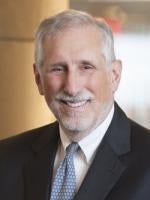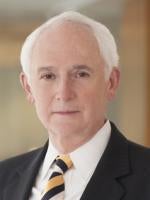On August 2, 2018, The Federal Communications Commission has unanimously approved a Notice of Inquiry (“NOI”) to establish a $100-million telehealth pilot program. FCC seeks to identify how the agency can “help advance and support the movement in telehealth towards connected care everywhere and improve access to the life-saving broadband-enabled telehealth services it makes possible.” The NOI seeks public comment: initial comments by September 10 and reply comments by October 10, on various aspects of the contemplated program
Focus – The creation of the program would be to support delivery of broadband enabled telehealth services and applications by low-income Americans and low-income veterans, with a focus on direct delivery of such services and applications to patients beyond the doors of brick-and- mortar health care facilities. To that end, the Commission’s NOI prominently mentions remote patient monitoring and success stories, such as the Veterans Health Administration.
Budget and Program Structure – The Commission expects to set aside up to $100m in total funding from the Universal Service Fund for the pilot program. This would permit, for example, up to 20 health care providers that serve primarily law-income populations to partner with at least one facilities-based broadband provider and apply for a maximum of $5-million in universal service funding for supported services that would be used to deliver these connected care services to eligible patients.
Who Should Be Potential Eligible Health Care Providers? – The NOI seeks comment on establishing a threshold criterion for eligibility that limits the pilot program to health care providers (i.e., clinics and hospitals) that predominantly serve low-income patients. It also asks for potential proxies for identifying such entities (e.g., percentage of Medicaid patients served, location of such entities).
Who Should Be Potential Eligible Broadband Providers? – The NOI expresses a preference for facilities-based eligible telecommunications carriers to participate with health care providers. The Commission believes that a health care provider should have a partnership in place with at least one such broadband provider before applying for funds.
Who Should Be Potential Eligible Low-Income Subscribers? – The Commission seeks comment on limiting participating health care providers’ use of pilot program funding to Medicaid-eligible patients, as well as veterans who qualify based on income for cost-free health care benefits through the Department of Veterans Affairs.
What Services Should Be Supported? – The NOI envisions that the pilot program would help fund broadband connectivity that eligible low-income patients of participating clinics and hospitals would use to receive connected care services (and other services), and broadband connectivity that participating clinics or hospitals need to conduct its proposed connected care pilot project. However, the Commission also asks whether funding should be permitted to support equipment necessary for effective use of the broadband service and end-user devices, such as remote patient monitoring equipment.
Number of Projects, Support Amount and Disbursement? – The Commission seeks comment on whether there should be a set number of projects funded (e.g., no more than 20) and if a $5-million cap on each project is appropriate or larger amounts (e., maximum of $20-million) should be permitted. Finally, the NOI asks how funds should be disbursed, noting existing Universal Service Fund models.
Program Duration? – The Commission asks for comment on the duration of the Program and whether a 2 or 3-year funding period should be adopted.
Other Issues – The NOI asks about potential federal, state or local regulatory barriers that it should consider in designing the program. It seeks recommendations on how best to ensure that funds are used only for intended purposes. The Commission also raises the question of protecting patient information, while gathering data to measure the effectiveness/success of the pilot. Finally, the NOI seeks comment on how to best measure the program’s effectiveness in improving health outcomes for low-income consumers through increased access to broadband-enabled telehealth services.
Next Steps? – As noted above the FCC will be accepting public comments on these and related questions. We would expect a formal set of proposed rules to follow, perhaps by early next year. We sense a high degree of interest in this proposal, which Commissioner Brendan Carr is leading. Parties interested in helping shape the program on such key issues as, for example, amount of funding per project should be weighing in now, over the comment period.





 />i
/>i


